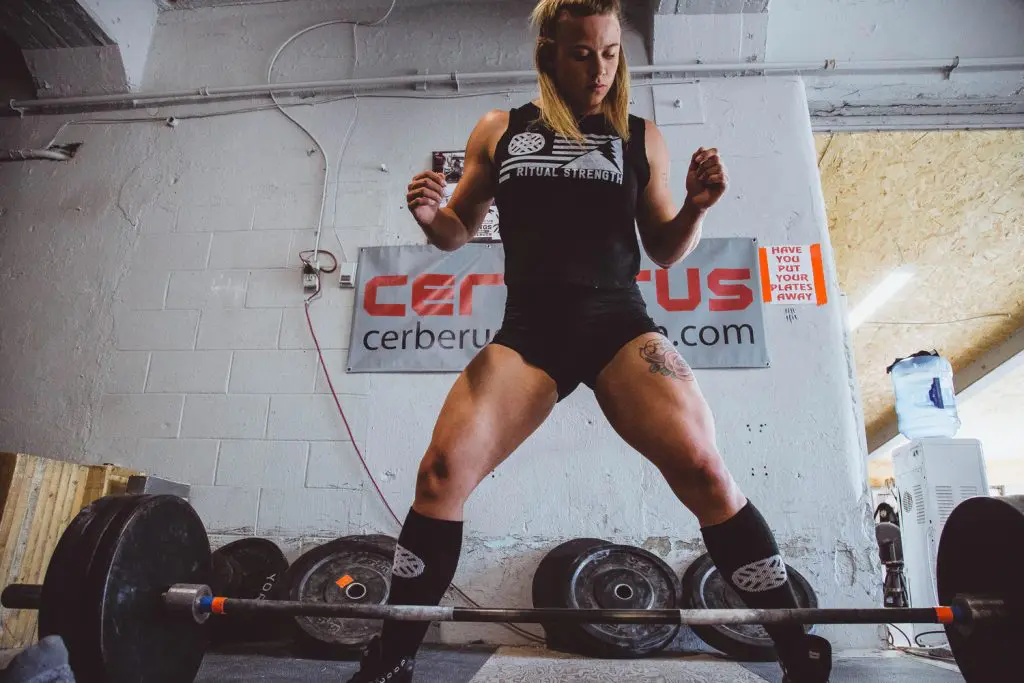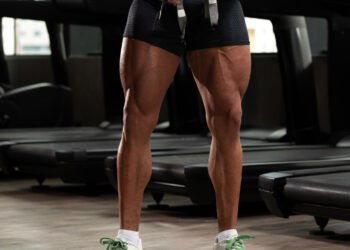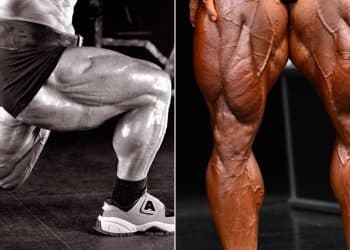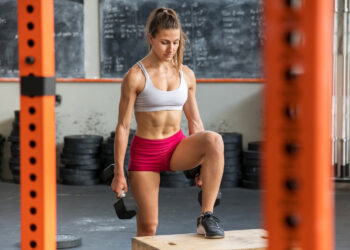Squats, deadlifts, leg presses, leg extensions, and leg curls are all great lower body exercises. Whatever your training goal is, they’ll help you reach it. However, these classic exercises also have something in common – they are all bilateral movements. That means they work both legs at once.
There is nothing inherently wrong with bilateral exercises, but they do have a few disadvantages. For starters, it’s all too easy to do more work with one leg than the other. That can lead to strength imbalances, and you could even develop muscle mass asymmetries, where one leg grows bigger.
Because of this, it makes sense to include at least some single-leg or unilateral leg exercises in your lower body workouts.
The 5 Best Unilateral Leg Exercises
When it comes to unilateral leg exercises, most people limit themselves to a few sets of lunges. While this is better than nothing, there are lots of other single-leg exercises you can do to add variety to your workouts. Here are five of the best.
1- Deficit rear foot elevated split squats
This exercise will hammer your quads, glutes, and hamstrings. Using a deficit increases your range of motion, which makes this exercise more demanding and effective than the regular version. This exercise is also known as a Bulgarian split squat.
How to do it:
Level Up Your Fitness: Join our 💪 strong community in Fitness Volt Newsletter. Get daily inspiration, expert-backed workouts, nutrition tips, the latest in strength sports, and the support you need to reach your goals. Subscribe for free!
- Stand with your back to a knee-high bench. Place a low platform, about 4-6” high, just in front of the bench.
- Stand on the front platform on one leg and place your rear foot on top of the bench behind.
- Bend your legs and squat down, lowering your rear knee to the floor. Descend as far as your flexibility allows. Stand back up and repeat. Swap legs and do the same number of reps on the other leg.
Make this exercise harder by holding dumbbells in your hands, resting a barbell across your shoulders, or wearing a weighted vest.
2- Single leg Romanian deadlift
This exercise works your posterior chain, which is the collective term for your hamstrings, glutes, and spinal erectors. These muscles are vital for running and jumping, and also for how you look when viewed from behind. If you want a firmer, bigger booty. This exercise will help.
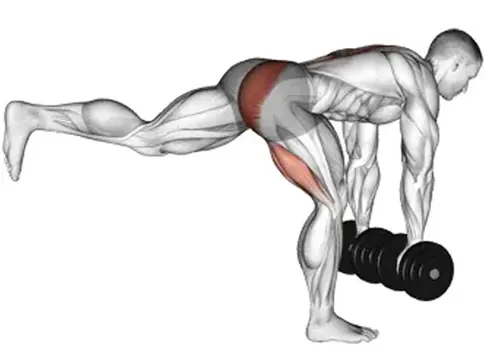
How to do it:
- Stand with your feet together. Shift your weight over onto one leg.
- Without rounding your lower back, hinge from your hips and lean forward. Reach down and touch the floor with your opposite hand. Extend your non-weight-bearing leg out behind you for balance. Stand back up and repeat.
Increase the difficulty of this exercise by holding a weight in one hand. If you find it hard to balance, do this exercise next to a wall and use your free hand to brace yourself. Move away from the wall as your balance improves.
3- Single leg box squats
Single leg squats, also known as pistols, are a very effective but difficult unilateral leg exercise to master. They work all of your lower body muscles, especially your quads, hamstrings, and glutes. You need great balance, and lots of strength to pull off a pistol. This variation makes single-leg squats much more accessible. Use them as a stepping stone onto full pistol squats.
How to do it:
- Stand with your back to a knee-high exercise bench or sturdy chair. Shift your weight onto your left leg and extend your right leg out in front of you.
- Push your hips back, bend your knees, and squat down until your butt touches the bench behind you. Descend slowly; don’t just drop onto the bench. Keep your other leg out in front of you, but don’t let it touch the floor. Extend your arms out in front of you for better balance.
- Stand back up and repeat. Do the same number of reps on each leg.
You can make this exercise harder by squatting down to a lower bench or holding weights in your hands. You can also wear a weighted vest.
4- Barbell reverse lunges
Forward lunges are a popular unilateral leg exercise, but they can also be hard on your knees – especially if you have a tendency to let your front knee drift forward and beyond your toes. Reverse lunges are much more cheat-proof and put less strain on your knee joints. They work all of your lower body muscles, especially your glutes and hamstrings.
How to do it:
- Rest and hold a barbell across your upper back. Stand with your feet together.
- Take a large step back with your left leg, bend your legs, and descend until it’s an inch or two above the floor.
- Stand back up, recover your left leg, and do another rep. You can swap sides or do all your reps on the same leg and then change sides. Both options are acceptable.
Make this exercise harder by starting with both feet on a 4 to 6-inch step. This will increase the range of motion.
5- Lateral goblet lunges
When it comes to lower body training, it’s all too easy to focus exclusively on your quads, hamstrings, and glutes, and forget all about your hip abductors (outer thighs) and adductors (inner thighs). These muscles are important for hip and knee stability, as well as giving your legs a fuller, more muscular appearance.
Lateral goblet squats work all of your leg muscles at the same time, will increase hip mobility, and, like all unilateral exercises, are good for your balance too.
How to do it:
- Hold a kettlebell by the vertical handles in front of your chest. Tuck your elbows into your sides for stability. Stand with your feet together.
- Take a large step out to your left and bend your left knee. Push your hips back and descend into a deep side lunge. Keep your right leg as straight as possible. Keep your chest up, and do not round your lower back.
- Push off your left foot and return to the starting position. Do another rep on the same leg or lunge out to the other side as preferred.
You can also do this exercise with a single dumbbell or weight plate, or a dumbbell in each hand. If you have good balance, you can also do it with a barbell across your upper back.
Programming unilateral leg training
To get the most from these exercises, your weights and reps should match your training goal. While learning these exercises, use light weights and moderate to high reps to perfect your technique. Then, once you have mastered them, use the load and reps that best suit your workout objectives.
Remember to warm up before unilateral leg training. This will reduce your risk of injury.
Level Up Your Fitness: Join our 💪 strong community in Fitness Volt Newsletter. Get daily inspiration, expert-backed workouts, nutrition tips, the latest in strength sports, and the support you need to reach your goals. Subscribe for free!
- Strength– 1 to 5 reps with heavyweights, resting 3 to 5 minutes between sets.
- Hypertrophy– 6 to 12 reps with moderate to heavyweights, resting 60 to 90 seconds between sets.
- Endurance and fat burning– 13-20 reps with light to moderate weights, resting 30 to 60 seconds between sets.
The 5 benefits of unilateral leg training
Not convinced of the value of unilateral training? Don’t worry – we’ve laid out the main benefits of single-leg exercises below!
1- Improved balance– balance is your ability to keep your center of gravity over your base of support. In other words, it’s being able to stay on your feet and not fall over, even if you are stood on one leg or on an unstable surface.
Single-leg exercises force you to maintain your balance, and the more often you challenge this fitness component, the better at it you will become. Balance is vital in sports, as well as everyday living. Balance also tends to deteriorate with age, which is why older people are often more prone to falls. Bilateral exercises do not do much to improve your balance.
Balance is very trainable (1). Improved balance will make you a better athlete, and also help you in everyday tasks such as bending over to tie your shoes.
2- Increased muscle activation– unilateral exercises produce greater muscle activation than the same exercise done bilaterally (2). This is because, when you exercise one leg at a time, you have to work much harder to stabilize the weight you are lifting as well as your joints.
In squats, leg presses, etc. one leg supports and stabilizes the other. But, when you take one leg away, you not only have to lift the weight, you also have to keep your ankles, knees, and hips properly aligned. This increases central nervous system excitement, which fires up more muscle fibers. You’ll be able to feel this when you do unilateral exercises. Your inner and outer thighs will be much more active, even if you are focusing on your quads or hamstrings.
3- Reduced joint stress– bilateral exercises like leg presses and deadlifts allow you to lift a lot of weight. This puts a lot of force through your joints. Most people find it much harder to use as much weight when they do unilateral leg training. This takes stress off your joints but, because of increased muscle activation, it still provides enough stimulus to trigger hypertrophy and strength increases.
If you are suffering from sore hips or knees, try replacing your heavy bilateral leg exercises with lighter unilateral exercises. They are just as effective but won’t cause as much joint wear and tear.
4- Increased functional strength– functional strength is your ability to perform everyday movements as well as those commonly seen in sports. Except for powerlifting, weightlifting, and rowing, almost every other sport involves unilateral rather than bilateral movements. Walking, running, hopping, sprinting, and kicking are all unilateral activities.
Bilateral exercises increase general fitness and strength, but if you want to improve your performance in sports, or just be more capable in everyday life, unilateral exercises are a must.
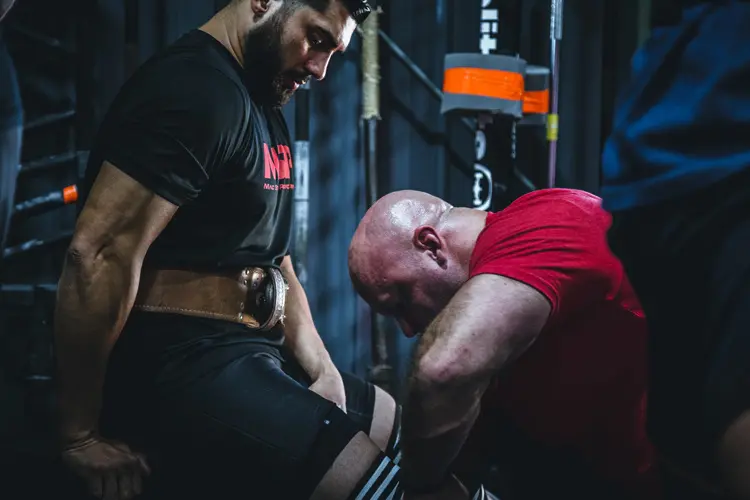
5- Variety– exercise variation is very important for avoiding fitness plateaus. If you always do the same exercises, i.e., regular squats, deadlifts, leg presses, etc., your body will get used to those movements and may stop adapting. In other words, you won’t build any new strength or muscle mass.
Unilateral exercises are very useful for shaking up your workouts and hitting your muscles with a different form of stress. In studies published in the Journal of Strength and Conditioning Research, the authors concluded that exercise variety is as important as increasing weight or doing more reps for continued muscle growth and building strength (3).
Use unilateral exercises to add variety to your workouts. Alternate single-limb and two-limb exercises month-by-month to avoid plateaus and keep gaining strength and muscle size.
The disadvantages of unilateral leg training
No workout method is without drawbacks, and that includes unilateral leg training. The main disadvantages of this type of training are:
1- Difficult to master– unilateral exercises are usually more challenging to learn than their bilateral counterparts. If your balance isn’t great, or you lack stability, you may find yourself wobbling or even falling over when you try some single-leg strength training moves.
The easiest way around this problem is to choose exercises where you can brace yourself with a free hand, such as leaning against a wall. As you become more proficient, you can use less support and progress to doing your chosen exercise unaided. Some unilateral exercises are harder than others, so it makes sense to use the simpler ones until your balance and stability are better.
2- Less weight– you won’t need a lot of weight to make most unilateral exercises challenging. However, if you like lifting heavy weights, this can be frustrating, even though the exercise is still productive. There is nothing quite like loading up the leg press with lots of plates and repping out! Bodyweight single-leg squats may not be as satisfying for some exercisers.
Too avoid this problem, do unilateral leg exercises before moving on to your heavier bilateral exercises. This allows you to enjoy the benefits of both types of exercise while also satisfying your desire to lift heavyweights.
3- Exercise specificity– if you want to increase your squat or deadlift strength, perhaps because you are a powerlifter, the majority of your training should revolve around these exercises. While you can build strength and size one leg at a time, those increases may not transfer to your bilateral performance.
You should still include unilateral exercises in your workouts, but you should use them as supplementary exercises and not replacements for your main lifts. Put most of your energy into the exercises you want to improve.
The wrap-up
A lot of lifters dismiss unilateral training as easy, unimportant, or only suitable for beginners. This is not the case! Every exerciser can benefit from training one leg at a time. You don’t have to give up bilateral leg exercises but, whatever you are training for, unilateral leg exercises should be part of your workout program.
References:
- PubMed:Effects of Balance Training on Balance Performance in Healthy Older Adults: A Systematic Review and Meta-analysis https://www.ncbi.nlm.nih.gov
- Journal of Strength and Conditioning Research:Muscle Activation in Unilateral Barbell Exercises and Implications for Strength Training and Rehabilitation https://journals.lww.com
- Journal of Strength and Conditioning Research: Changes in Exercises Are More Effective Than in Loading Schemes to Improve Muscle Strength https://journals.lww.com

